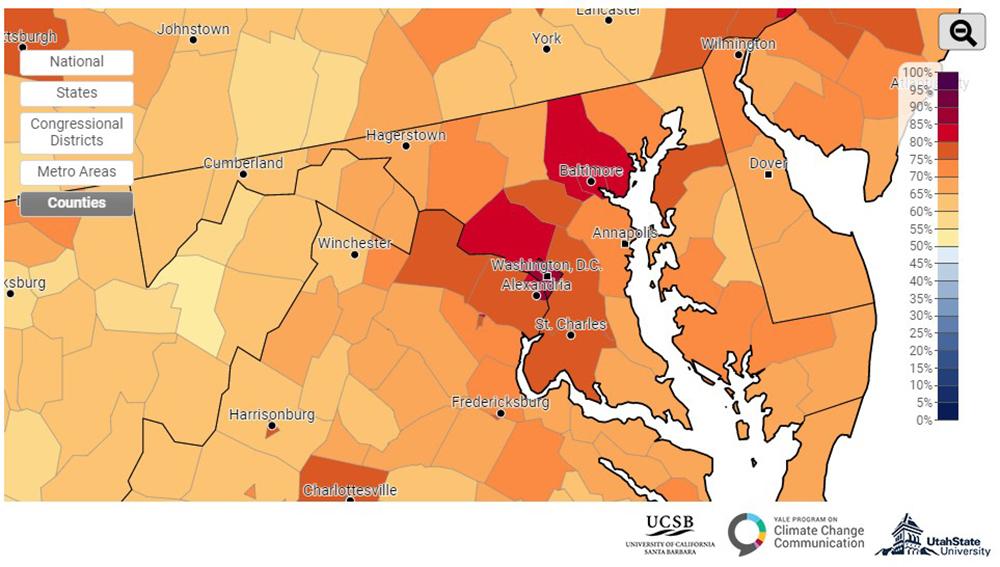Maryland’s climate is trending towards warmer and wetter conditions with more extreme weather events. Temperatures have already risen about 2.5°F, and the number of very hot days (maximum temperature over 95°F) has increased. Average annual precipitation has also increased, and precipitation events are projected to increase in frequency and intensity. In addition, seasons are becoming less distinct with milder winters, and sea levels continue to rise.

These climate trends are already impacting communities, industries, and natural habitats in Maryland and will continue to in the future. For example, extreme heat events cause heat-related illness and warmer temperatures may eventually reduce crop yields. Increasingly intense precipitation events cause increased flooding that can damage property and threaten lives, and rising seas cause increased nuisance tidal flooding and saltwater intrusion into coastal forest and agricultural land. Climate change will not affect everyone in Maryland equally. Some individuals will be more exposed to climate impacts, such as those living in flood-prone areas or with outdoor jobs, and some people will be more sensitive to those impacts, such as individuals with health conditions that make them more susceptible to heat stress. In addition, some Marylanders may lack resources to adapt to a changing climate and to recover from extreme events.
The climate is changing in Maryland and throughout the world because carbon dioxide is produced when humans burn fossil fuels, such as gas or coal. That carbon dioxide collects in the atmosphere and acts like a heat-trapping blanket, causing the Earth to warm. However, we can take actions, individually and collectively, to reduce carbon dioxide emissions and limit how much the climate changes in the future. According to the Yale Climate Opinion Maps 2020, 72% of adult Marylanders think global warming is happening and 69% are worried about it, but only 38% discuss global warming at least occasionally. In addition to reducing your individual use of fossil fuels and encouraging organizations to do the same, talking about climate change with friends, family, and neighbors can help encourage others to take action.

Along with reducing carbon dioxide emissions to slow climate change, we can also take action to adapt to the impacts of climate change we are already experiencing. For example, adaptation measures could include updating stormwater management systems to accommodate more intense rain events, increasing access to air conditioning during extreme heat events, or planting crops better suited to the changing climate. See our Sea Level Rise and Flooding pages for more information about potential adaptation options to address these climate impacts.
